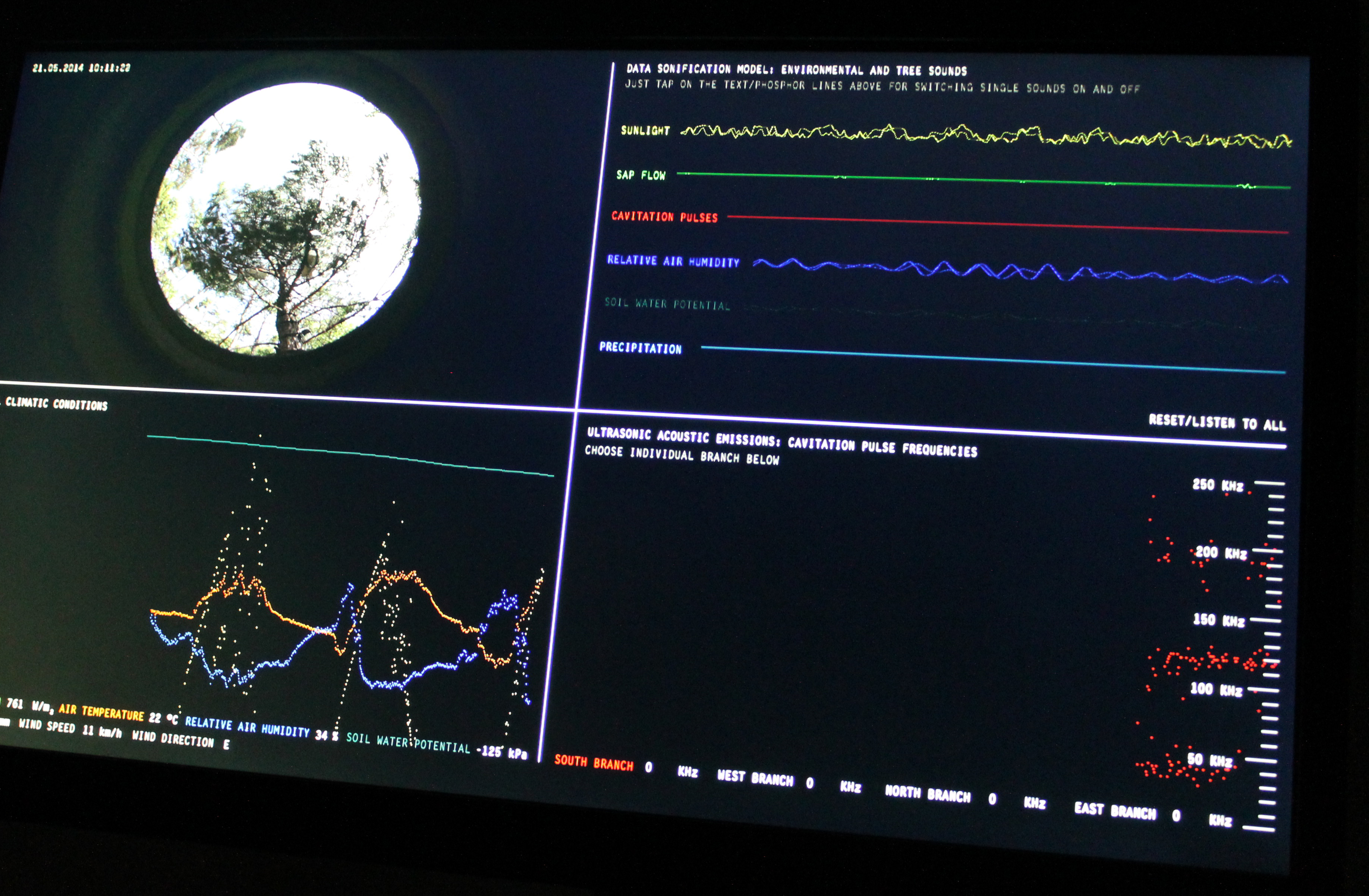The representation of data using sound (among other means) can help to exploit the effectiveness of our sense of hearing in grasping complex contexts both through immediate orientation in space and intuitive classification of sound characteristics. Sonification offers a deep and broad insight into multidimensional data, enabling us to recognize patterns and providing an aesthetic and emotional experience of scientific discoveries.
Gathering ecophysiological data (i.e. conducting measurements of the local climatic and environmental conditions and of the physiological processes within a plant in response to these) has become an important method in research on climate change and vegetation dynamics. It helps to determine physiological thresholds of plants in terms of increasing temperature and consequently drought stress. A Downy oak in the central Alps, for example, is able to withstand the current climatic conditions of the air and soil whereas a Scots pine is pushed beyond its physiological limits despite the fact that both tree species have coexisted there for thousands of years. Consequently, shifts in the abundance of tree species are observed, and the ecophysiological knowledge acquired explains the underlying processes.
In our project, we combine field recordings of meteorological phenomena, recordings of acoustic emissions in trees and acoustic representations (sonifications) of ecophysiological data in one single auditory experience and make their correlation acoustically and aesthetically experienceable and explorable.



